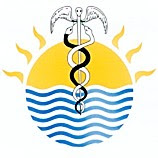We are still frozen in! Our track is over 450 mtrs to the main road and it resembles an ice rink. Let's hope the thaw comes soon.
Today I shall give some advice on initial hands-on routine. It doesn't matter in this instance if you are using reflexology, acupressure, physical therapy or any other form of therapy - the same advice holds for all types. Some of it sounds obvious, but it never ceases to amaze me that these things are not adhered to by scores of practitioners.
1. Be patient and calm. Your patient will probably be a bit nervous and if you show patient and calm yourself, this will help feel better.
2. Show confidence. As a patient (yes - I am one as well), it always puts me off when the therapist shows obvious nerves or any kind of anxiety. Act as if you know what you are doing without any 'faffing' about.
3. NEVER, NEVER tell the patient about your aches and pains. It is ok just to answer the question put to you 'How are you?' but don't drone on and on. They are paying you for you to listen to their troubles, not the other way around. Constantly dwelling on your problems (even though you may actually feel worse than the person on the couch) is not professional - cut it out!
4. Following your pre treatment prep. (see previous blog) approach the patient's head, feet, knee or whatever slowly and with due care - do not rush!! Always tell them what you are going to do, even if it's in the form of a question - 'I'm just going to hold your heels' or 'Is it ok if I place my hand on your tummy?' for example. Always keep them informed what you are doing and answer any question they may ask.
5. Initially you are probably 'tuning in' to their cranial rhythm or vital force so explain that this is what you are doing - other wise in their eyes you are just placing your hands on their heels without appearing to be doing anything!!
6. Make sure that the hands on hold is gentle yet firm. Over the ensuing 2/3 minutes you will be assessing the patient's heat, cold, energy flow, cranial rhythm and you will feel changes of energy quality taking place during that time - the hold has therefore to be firm.
7. Finally, make sure that YOU are comfortable as well as your patient. Try not to fidget.
The next blog will cover energy balancing through the heels.
Tuesday, 12 January 2010
Subscribe to:
Post Comments (Atom)

No comments:
Post a Comment